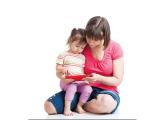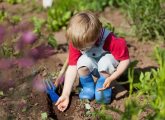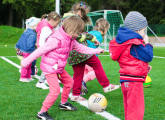Laura Moore shares five essential resources for your setting…
With the combination of early years settings having reduced budgets and our increasing awareness of sustainability, we need to get creative when it comes to resources.
By using natural materials, we’re offering open-ended resources, creating sensory experiences, promoting our wonderful world and providing opportunities to explore ways we can look after it.
Add in the fact that they can usually be sourced at no expense – it’s a no brainer!
Growing up by the sea means I spent many hours on the beach exploring. When you really look at pebbles, you discover that they can be rough or smooth and usually vary in colour, tone and shade which make them a great resource to use for exploring different themes and sorting accordingly.
A fun game to play with pebbles is to try stacking them in a tower. This will encourage the development of problem-solving skills and logic as children will have to think about the best pebbles to use from the bottom to the top if they want their tower to stay standing. It’s a brilliant mindful task for adults, too!
Staying with the beach theme, shells are an excellent resource to prompt discussions about patterns and detail. There’s something really fascinating about shells of any shape, size and colour so it’s no surprise that children are often mesmerised by them.
You might find that some children have lots of knowledge about shells and there may be children within your setting who have never seen or held one before, so all that talk among their peers and with other adults will allow for amazing learning opportunities.
Creating pieces of transient art is another lovely activity to do with shells, particularly when outside.
I think these fruits and seeds from trees should be a ‘must-have’ in continuous provision for children to use as they wish.
These natural resources can be used as props within their role play. For example, they can be added to a mud kitchen for use as pretend food items or creating a forest theme for animals. I have even seen them used as dinosaur poo – a wonderful addition to small world, imaginative play.
Indoor plants offer a variety of learning opportunities for children. They learn what plants need to stay alive and can take ownership of ensuring they are cared for.
Flowering plants and herbs, such as lavender and mint, allow for additional sensory experiences.
Being surrounded by greenery can help create a sense of calm too – good for supporting wellbeing, theirs and yours!
Take a walk through any woodland or green space and you are likely to find sticks of all shapes and sizes on the ground.
Children often love stick collections, and these are an excellent resource for opportunities to count, compare and measure, build and practise mark-making in mud or sand.
Give a child a stick and it instantly transforms into anything their imagination allows for – a witch’s broomstick; a sword for a knight; a wizard’s magic wand…the list is endless. Take a bag on your next stroll out and about and get collecting!
Laura Moore is an early years consultant. For more inspiration, follow Laura on Instagram: @lauraloveslearning

Early years reading – Take story time on screen
Editors picks

Looking after the environment – 8 ideas for Early Years
Editors picks

EYFS sports activities – Ideas to try at nursery
Editors picks
